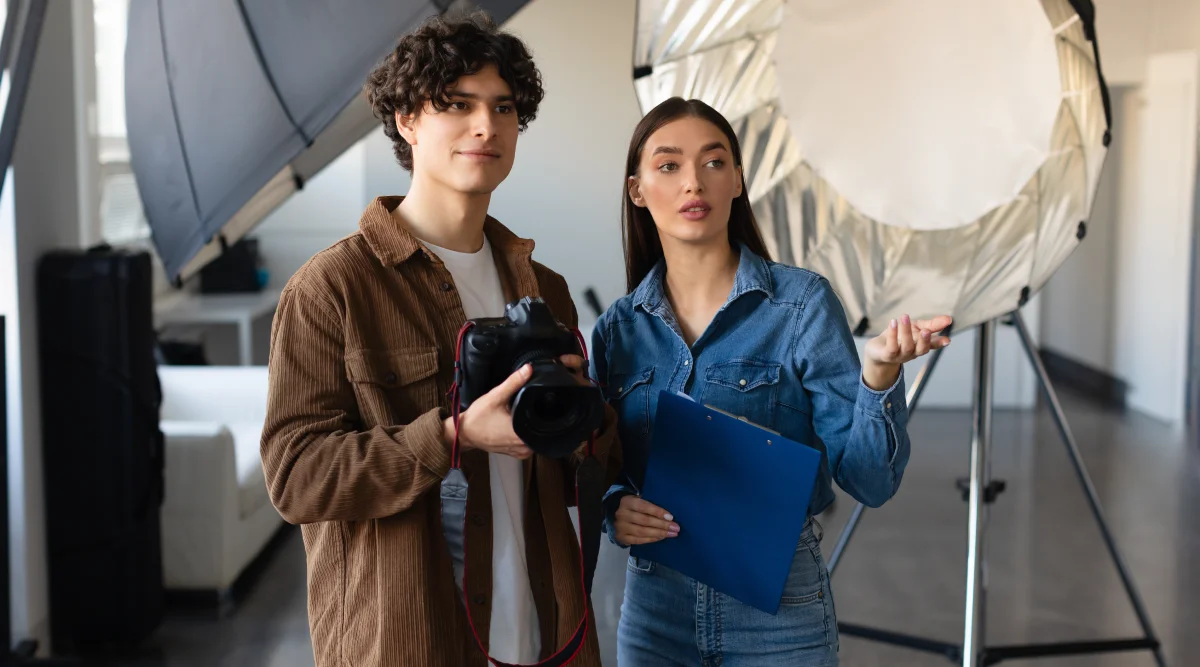The internet makes it easy for anyone to use an image without a creator's permission. If you share any content online—even only on your personal social media accounts—it's a good thing to know how to copyright an image.
Whether you’re a photographer, animator, painter, or other visual creative, one of the best ways to get eyes on your work is to post it online. Posting photographs on social media and websites can also be risky, giving people easy access to your work without your permission. While there is no perfect way to protect your work from unauthorized use, registering for copyright ownership gives you critical tools for defending your work, including in a lawsuit if necessary.

Copyright is a group of rights over an artistic work that gives the copyright owner the exclusive right to display it; make, sell, or distribute copies; or create adaptations (in copyright law called “derivative works") based upon it.
Creators own the copyright to an image the moment they create it—and this applies to digital images just as it does printed ones. In other words, the image doesn't have to be printed or registered with the U.S. Copyright Office to obtain copyright protection.
Do I need to copyright my images?
No, you don’t need to copyright your images. In the U.S., copyright is automatic upon creation. As soon as the image is no longer an idea and is fixed in a tangible medium, it’s protected under copyright law.
While copyright registration isn’t required for protection, it is required in order to bring an infringement lawsuit in federal court. You are able to register after you discover the copyright infringement, but a lack of formal registration beforehand can limit the amount of damages you can collect.
Additional legal benefits of copyright registration include:
- Public record of ownership and evidence supporting a copyright legal claim
- Facilitates licensing your work to others for money
Image copyright protection checklist
Before beginning the process of registering a copyright for an image, you must make sure it qualifies for protection.
Here's what makes a photograph copyrightable:
- It must be your original work. The work must originate with you and show at least a minimal amount of creativity. It does not, however, have to have artistic merit per se, and the kinds of images that can be copyrighted include digital, print, black and white, color, and graphic designs.
- The image must be fixed for at least some period of time in a tangible object. This means that the image cannot merely be an idea or concept but rather must be on film or captured digitally.
- You must own the copyright. If you took the photo as part of a work-for-hire agreement (such as a freelance photographer), your employer likely owns the copyright unless your contract states otherwise.
If the image meets all of these conditions, you can move forward with registering your photo's copyright with the U.S. Copyright Office.
Note that trademarking is an entirely different process and protects words, phrases, or symbols that identify the source of goods. It is also accomplished through a different government entity, the U.S. Patent and Trademark Office.
How to copyright a photo
While you don't need to register your copyright with the U.S. Copyright Office to receive protection, registration does have important advantages, including creating a record of your ownership and allowing you to file a federal lawsuit for copyright infringement. Here are the basic steps for filing a copyright:
- Complete the registration form. You can either do this online or with a hard copy that you must mail to the U.S. Copyright Office.
- Include a copy of the work to be copyrighted. The Copyright Office provides information on whether you must provide a physical or digital copy. Your image will need to be high resolution and good quality.
- Pay the filing fee and submit your application. Processing time varies, but the date on which the registered U.S. copyright becomes effective is the date on which the office receives the application and fee. The filing fee varies depending on whether you’re registering a single image or multiple and whether the image has been published or not, among other factors. The fee can range from $45 to $500.
Ensure that you provide all the correct information and a usable image in order to receive approval for registration. If your application needs clarification, it will take longer to be approved.
Once you register your copyright, you may choose to transfer any or all of your rights to someone else by agreement. You may also choose to license the photograph for specific usage, which may be limited in terms of types of usage, time frame, etc.
While you can copyright a photograph for free on your own, using the help of legally trained professionals will ensure that you have attached all of the copyright rights you intend to retain regarding your work.
LegalZoom can file your application for you with the U.S. Copyright Office. You just answer a few questions, and then we prepare and submit the application for you, saving you time and potential complications.
How much does it cost to copyright images or photos?
Copyright protection is immediate upon creation and free.
If you choose to register your work with the Copyright Office, there is an application fee that must be paid. The fee will depend on multiple different factors, including whether there is a single image or multiple.
- A single image with a single author: $45
- A group of published images: $55
- A group of unpublished images: $85
How else can I protect my images online?
While there’s no foolproof way to protect your images from misuse or to know if something is copyrighted, there are a lot of techniques you can use to discourage others from using your images. Some ideas include:
- Add a visible watermark to denote your name or business name on the image.
- Include a copyright notice (whether you’ve registered it or not) in the metadata or on the image. A copyright notification should look like © [Year] [Your Name] or simply the copyright symbol, ©.
- Upload low-resolution or low-quality photographs online. This makes it more difficult for others to download and use your images for reproduction or to sell.
- State terms of use and licensing on your own website and other platforms where you post images.
- Create a blog post or website page talking about the importance of copyright and not using other people’s work without their permission. Link to this information regularly and be an advocate for intellectual property and protecting creative works.
- Be proactive in checking for unauthorized use. The faster you can identify misuse and notify the party, the faster things can be resolved. You can ask them to take it down, provide a link to your work, or payment for the use. If they refuse, you can then consider legal action.
Many people believe that anything posted online is available for anyone to use. Adding watermarks and copyright notices can help educate the public and deter unauthorized use.
FAQs
How long does it take to copyright images?
Copyright protection begins immediately, as soon as an image is fixed in a tangible medium, such as film or digital. As soon as you create an image, U.S. law provides legal protection.
If you want to register your work with the U.S. Copyright Office, it takes approximately two months to process the application.
How do I respond to unauthorized use of my photos?
You have options when responding to unauthorized use of your photos. You can:
- Send the user a cease and desist letter asking them to remove the photos and not use them again.
- Pursue legal action in federal court. If your work has already been registered with the Copyright Office, you can bring an infringement lawsuit. If your work has not yet been registered, you can register it after copyright infringement has occurred in order to bring a lawsuit. Registration after infringement can limit the amount of statutory damages you can collect.
- You can pursue remuneration through the Copyright Claims Board. The CCB resolves copyright disputes with damages of less than $30,000.
Can I copyright an image of a famous person or brand?
The short answer is, yes, you can copyright an image of a famous person or brand.
But this can be complicated. Brands and logos are protected by trademark law. So while the image you take is yours and protected under copyright, the brand and logo would still be owned by the brand under trademark. The brand has rights for how the image is used because it represents its brand.
When it comes to celebrities, they do have rights on how their image is used. While the photographer owns the copyright to the image, they don’t have exclusive rights to how and when to use the image. The celebrity image represented in the photo also has rights.
How long does copyright last?
A copyright lasts for the lifetime of the creator plus 70 years.
Michelle Kaminsky, J.D. contributed to this article


